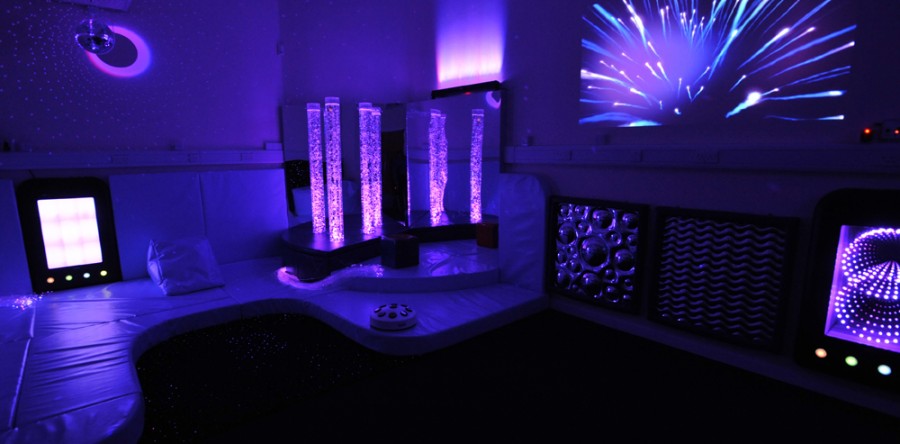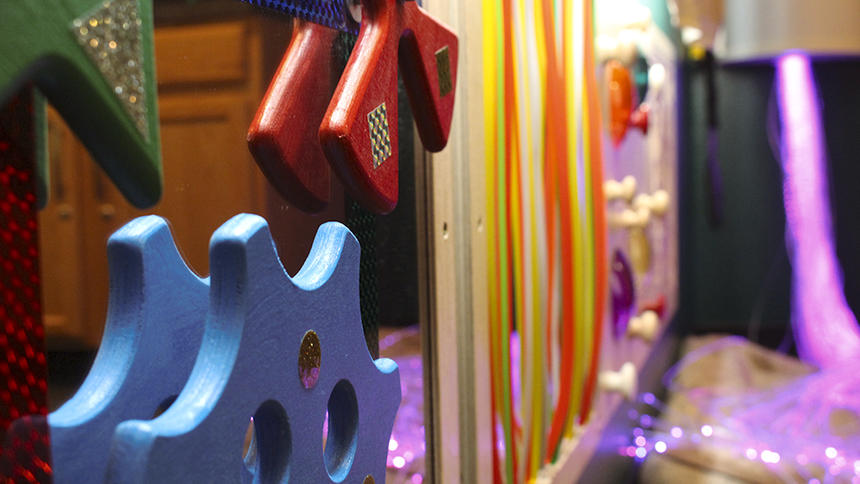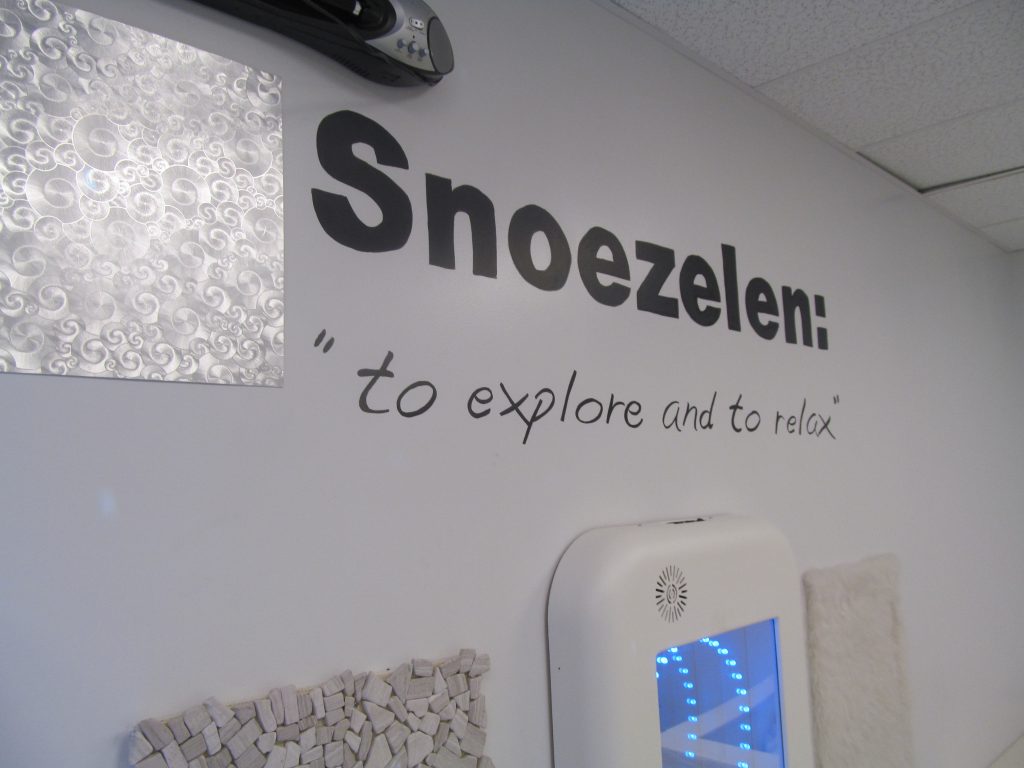
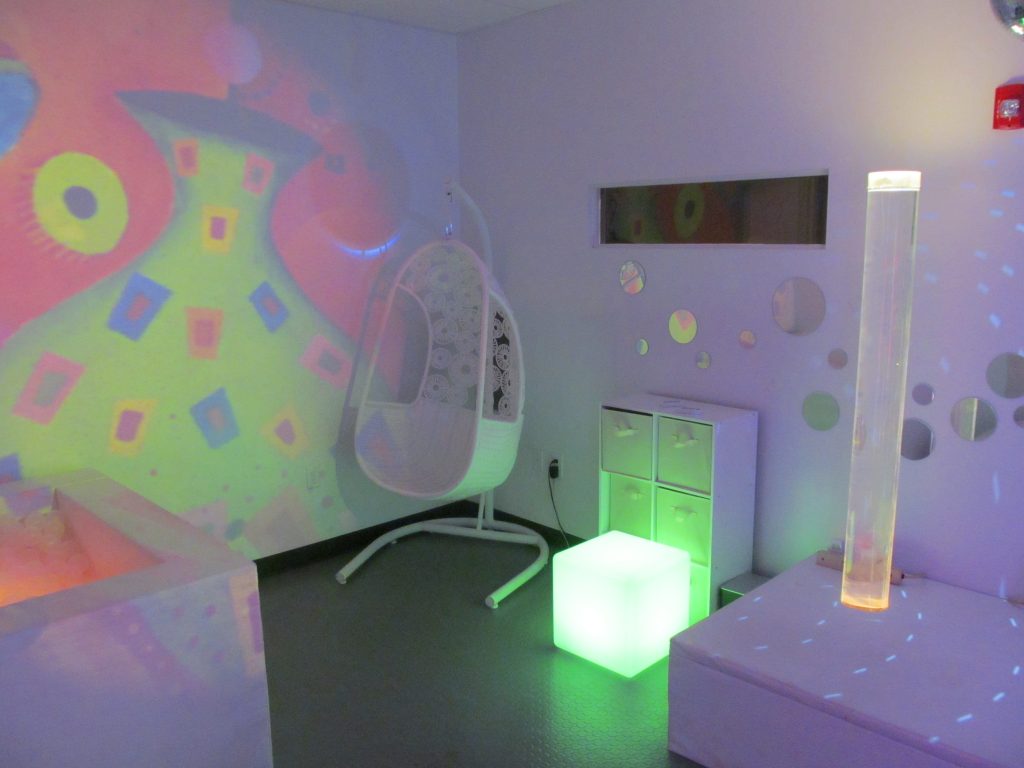
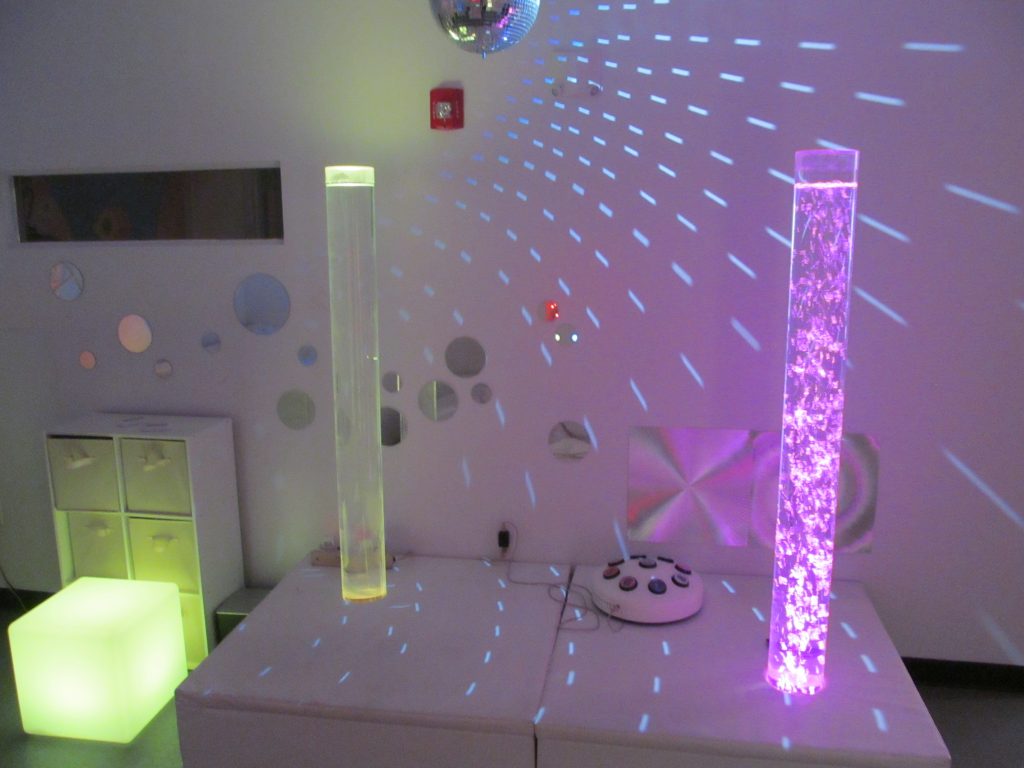
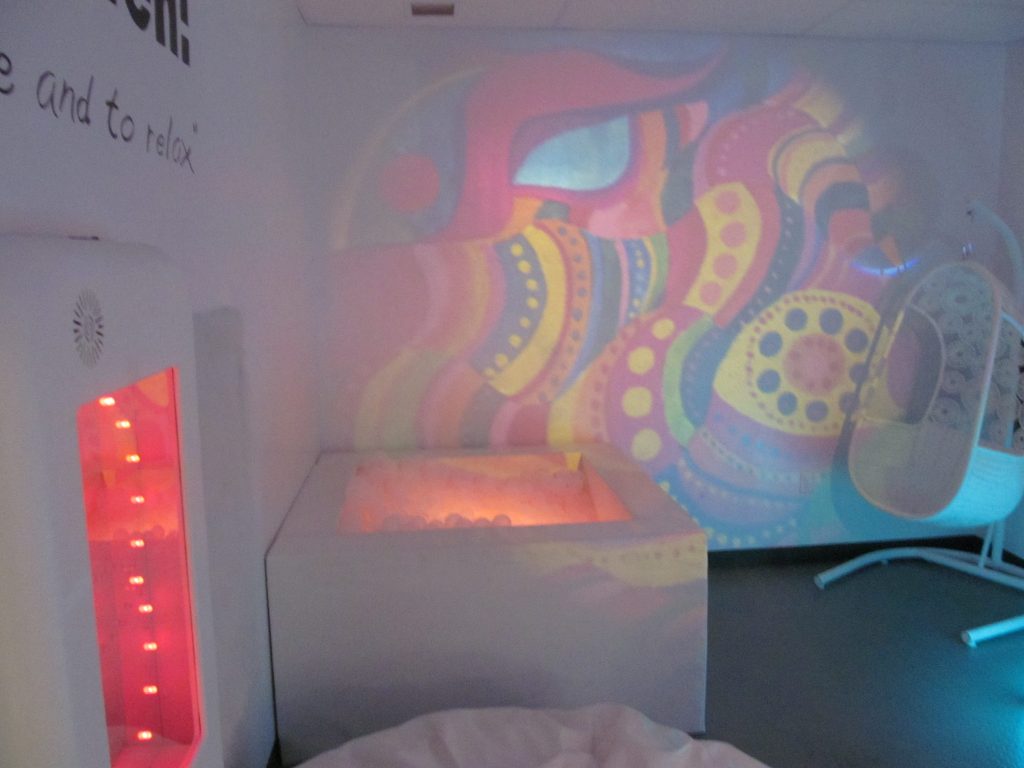
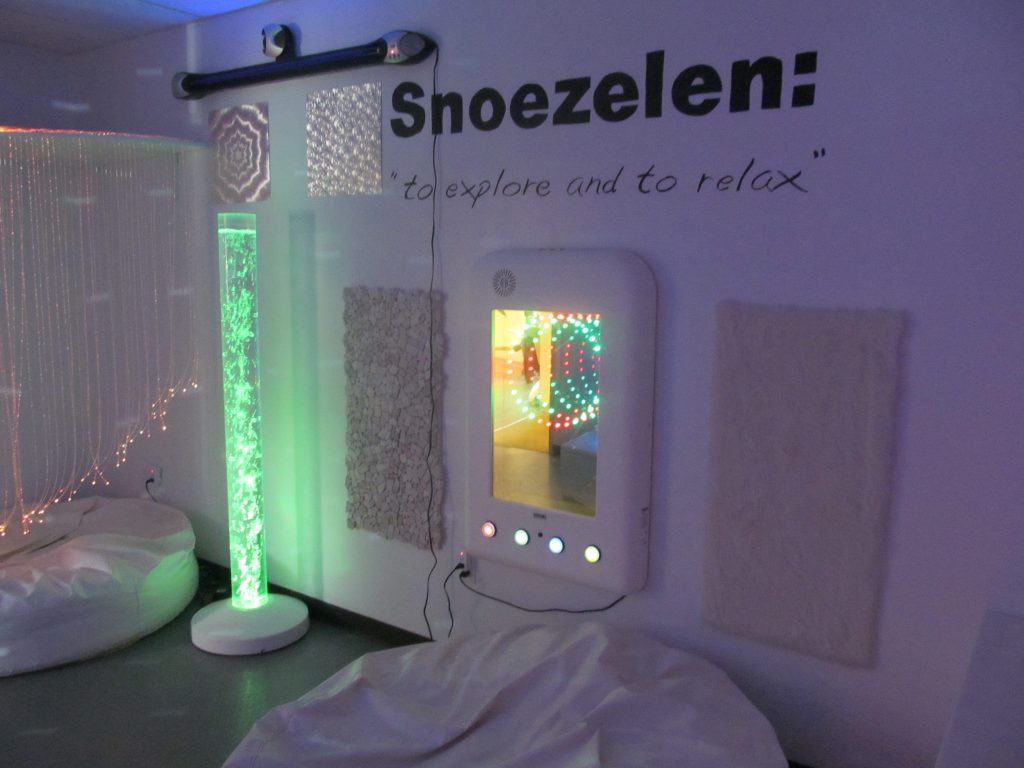
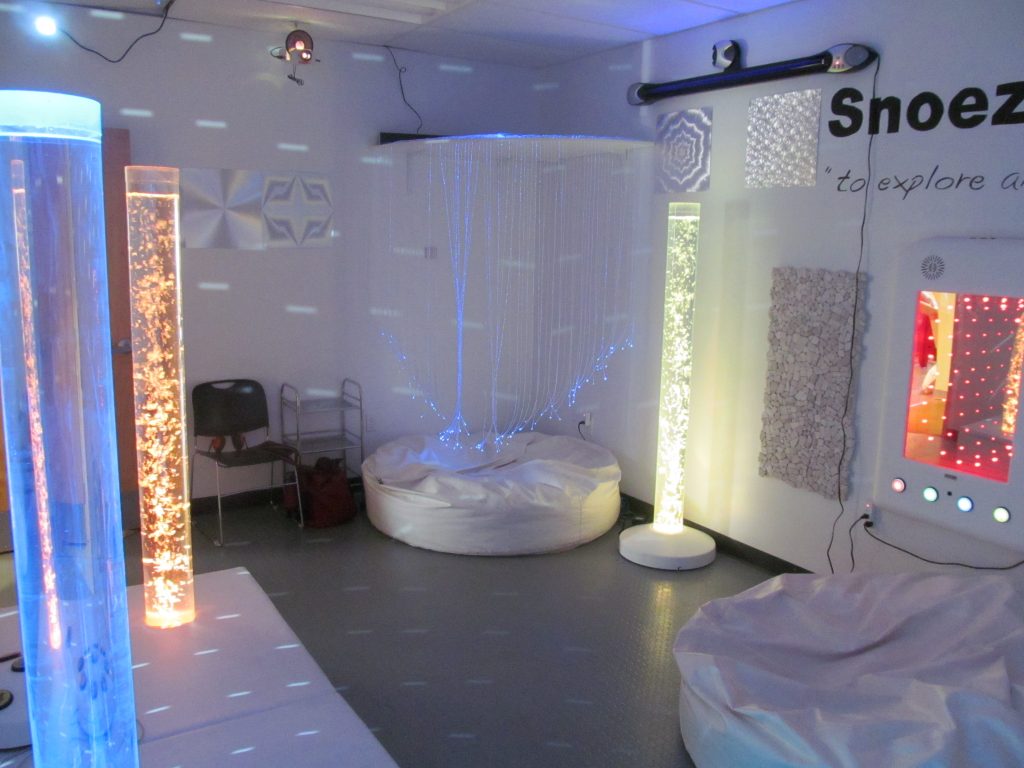
According to Hogg, Caver, Lambe, and Smeddle (2001), the use of multi-sensory rooms, like a Snoezelen room, provides a scope of positive results for individuals with disabilities. Snoezelen, which is a combination of two Dutch words to mean, “to explore and relax”, is a multisensory room that provides users a safe and controlled environment to investigate stimuli the senses (Botts, Hershfeldt, & Christensen-Sandfort, 2008). The user is encouraged to engage the features of the room at their own speed and according to their interests (Hogg, Cavet, Lambe, & Smeddle, 2001).
The Snoezelen room is equipped with tools that vary according to location. Because of this, each Snoezelen room will have its personal unique feel and may be distinct from others. The tools that are equipped with each Snoezelen room stimulate the senses of auditory, visual, tactile, and olfactory. For auditory stimulation, a room may be equipped but not limited to new age music, beach, ocean, or bird sounds (Ball & Haight, 2005). For visual stimulation, the Snoezelen room may contain mirror balls, fiber optic curtains, fiber optic sprays, bubble columns, or rotating projections (Ball & Haight, 2005). A room may also include comfortable seating, vibrating recliners, rocking chairs, vibrating pillows, or ball pits to help stimulate the sense of touch (Ball & Haight, 2005).
Ball, J., & Haight, B. K. (2005). Creating a multisensory environment for dementia. Journal of Gerontological Nursing, 31(10), 4-10.
Botts, B. H., Hershfeldt, P. A., & Christensen-Sandfort, R. J. (2008). Snoezelen®: Empirical review of product representation. Focus on Autism and Other Developmental Disabilities, 23(3), 138-147.
Hogg, J., Cavet, J., Lambe, L., & Smeddle, M. (2001). The use of ‘Snoezelen’ as multisensory stimulation with people with intellectual disabilities: A review of the research. Research in Developmental Disabilities, 22(5), 353-372.

